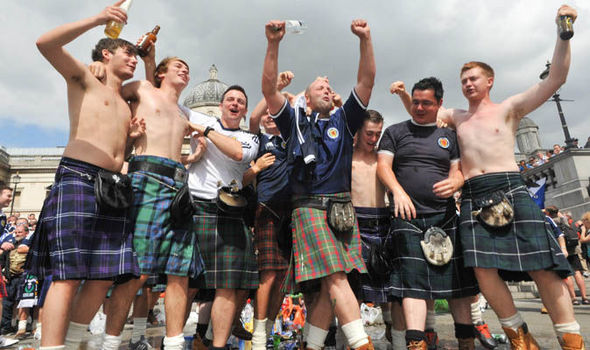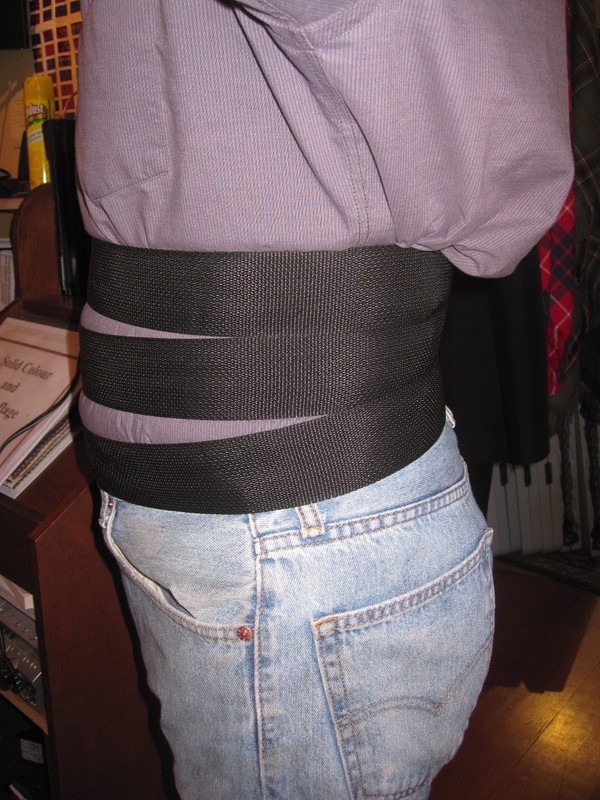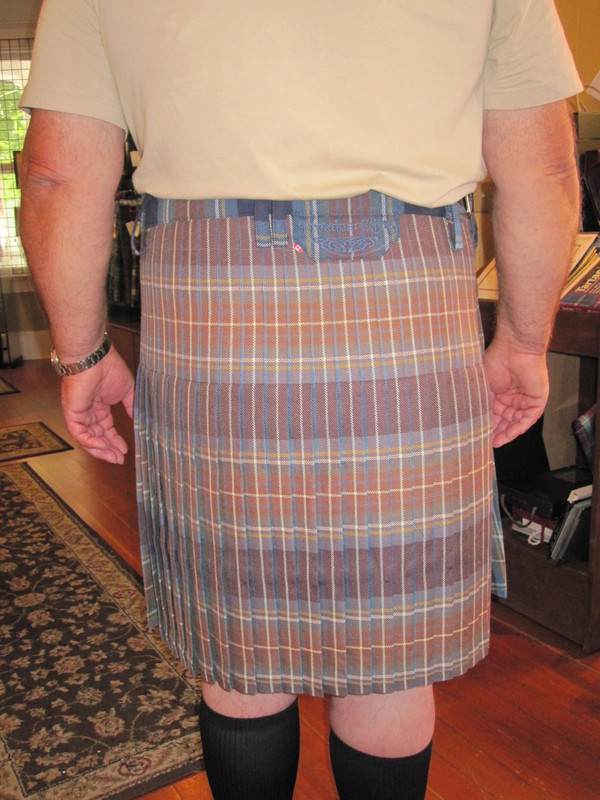|
-
30th December 21, 05:12 PM
#16
I'm going to try to answer Jock's question from post #11. His question is about the wearing of kilts at mid knee in N. America and if that is the norm and if we kiltmakers measure for that length.
When I would measure for a custom kilt in my shop, I would ask the customer where they wanted the bottom of the kilt to hit their knee. If the guy asked for a mid knee length I would ask "why mid knee?"
The answer was almost always - "Because that is normal, right? That is what I see in pictures."
The "Art of Kiltmaking" by Barb Tewksbury specifies that the bottom of a kilt as defined by her Traditional method, should always be just at the top of the patella or knee cap.
So where does this thinking that the normal length of a kilt should be at mid knee come from?
It is my personal opinion that it comes from guys thinking that a kilt is like trousers and should be worn at trouser waist height. No trousers made in the last 40 years have the waist designed to be worn at the anatomical waist. Which was the norm at the time the Traditional kilt was designed.
Wearing trousers like this was normal up until the advent of modern blue jeans. But it looks odd today.

So guys today simply do not understand that a kilt is worn differently than trousers.
Here is a group of young Scots and you can see that while they are wearing kilts constructed in the Traditional high waisted style, they are all wearing them at trouser height. The bottoms of all are at mid or bottom of the knee. (Yes, these are Scots not N. Americans)

It is my personal opinion that this is where the thinking that mid knee is normal. Guys wearing a kilt, that was designed to be worn at the anatomical waist, down where they would wear their modern trousers.
Here is a small wooden model of the individual components of a kilt.
At the top you see the "rise" above the top strap.
In front are the aprons falling straight down from the belly.
In the back you can see the tapered part called "The Fell Area".
And below the Fell Area are the loose pleats.

A kilt made in accordance with The Art of Kiltmaking will have a Fell Area that is always 1/3 of the Drop or the distance from the center of the top strap, down to the bottom, selvedge edge. The total length of the kilt is then the Drop + the Rise. (Ask yourself when was the last time you saw a set of kilt measuring instructions that explain this?)
The Art of Kiltmaking assumes that the kilt will be worn with the top strap is cinched into the anatomical waist.
Or where the top strap is in this photo.

If the kilt is worn lower than it was designed and made to be worn, the bottom of the Fell Area will be blow the crest of the hips. The bottom of the kilt will then be below the top of the knee cap.
This photo shows a kilt worn lower than it was designed and made to be worn.

Notice please the tell tale "shower curtain" folds that develop in the pleats with the bottom of the Fell Area lower than the hip line. You can see exactly this at almost any Highland Games.
Notice also, that with the bottom of the Fell Area worn low, the customer will sit on the bottom of the Fell Area which has caused the Fell stitching to fail. Those hand stitches simply can't hold against the stress.
If a kilt is worn at the height it was designed, and constructed to fit, the pleats in the rear should form a smooth, unbroken line. From just a few feet away you should not even see that there are pleats until the person moves.

So, the way to fix this, has to do with the design of the kilt, and where it was made to fit.
But let's go back to looking at a kilt from the side like the wooden model.

For a kilt to fit and look right, the one thing that must be correct is the bottom of the Fell Area. It must hit right at the widest part of the hips or buttocks. Or just about where the hip joint is.
There is a bone (the Femur) in the thigh so the length of the pleats - from the bottom of the Fell Area - down to the bottom of the kilt or Selvedge - will always be the same for any one guy.
The only way to make a kilt shorter, to fit when being worn at trouser height, is to shorten the Fell Area. Or from the top down. This is why hemming a kilt up, to make it shorter, does not work.
Howie Nicklesby of 21st Century kilts. Steven Villagas of Utilikilts and myself of Freedom Kilts are some of the very few kiltmakers who take where the customer wishes to wear the waist of his kilts into our designs, and build the kilt accordingly. I actually measured for the length of the Fell Area and asked for this measurement on my website. But this was more complicated than the usual 3 measurements of most websites.
This is one of my mid waist height kilts and it appears to fit pretty well. But it was made, from the ground up, to fit like this. The length of the Fell Area is shorter to account for the waist worn lower. The bottom of the kilt is at the top of my knee cap, but in the front, the waist is actually below my belly button.

So what started the thinking that mid knee was normal? Well, I blame an ill-informed customer base. Guys who want a kilt but were never taught how to wear one. They just assume that a kilt is worn like trousers.
And I blame kiltmakers who don't explain this stuff to their customers. I believe that it is vital that a kiltmaker explain that the total length of a kilt is Drop + Rise, and that the bottom of the Fell Area should be at the hip line. (or right about where the hip joint is.)
And it is also my personal opinion, that until other kilt makers take the length of the Fell Area - along with the total length (Rise + Drop), into account when explaining how a kilt should fit, that the selvedge below the top of the knee thing will stay the norm.
This puts the emphasis of teaching our customers, and making kilts that fit well regardless of where the customer wishes to wear the waist, straight upon the shoulders of we, the kiltmakers.
Last edited by Steve Ashton; 30th December 21 at 07:24 PM.
-
The Following 5 Users say 'Aye' to Steve Ashton For This Useful Post:
 Posting Permissions
Posting Permissions
- You may not post new threads
- You may not post replies
- You may not post attachments
- You may not edit your posts
-
Forum Rules
|
|























Bookmarks